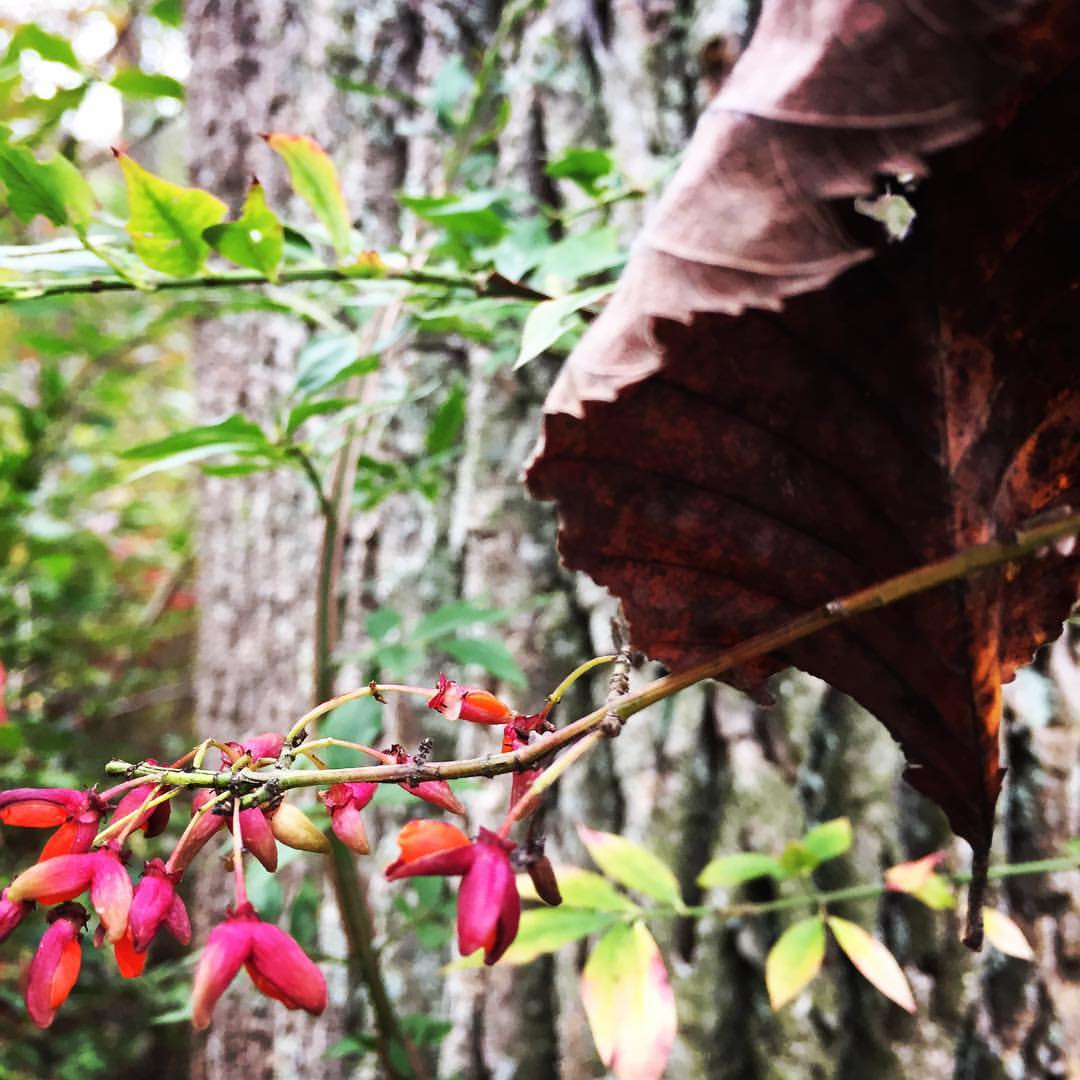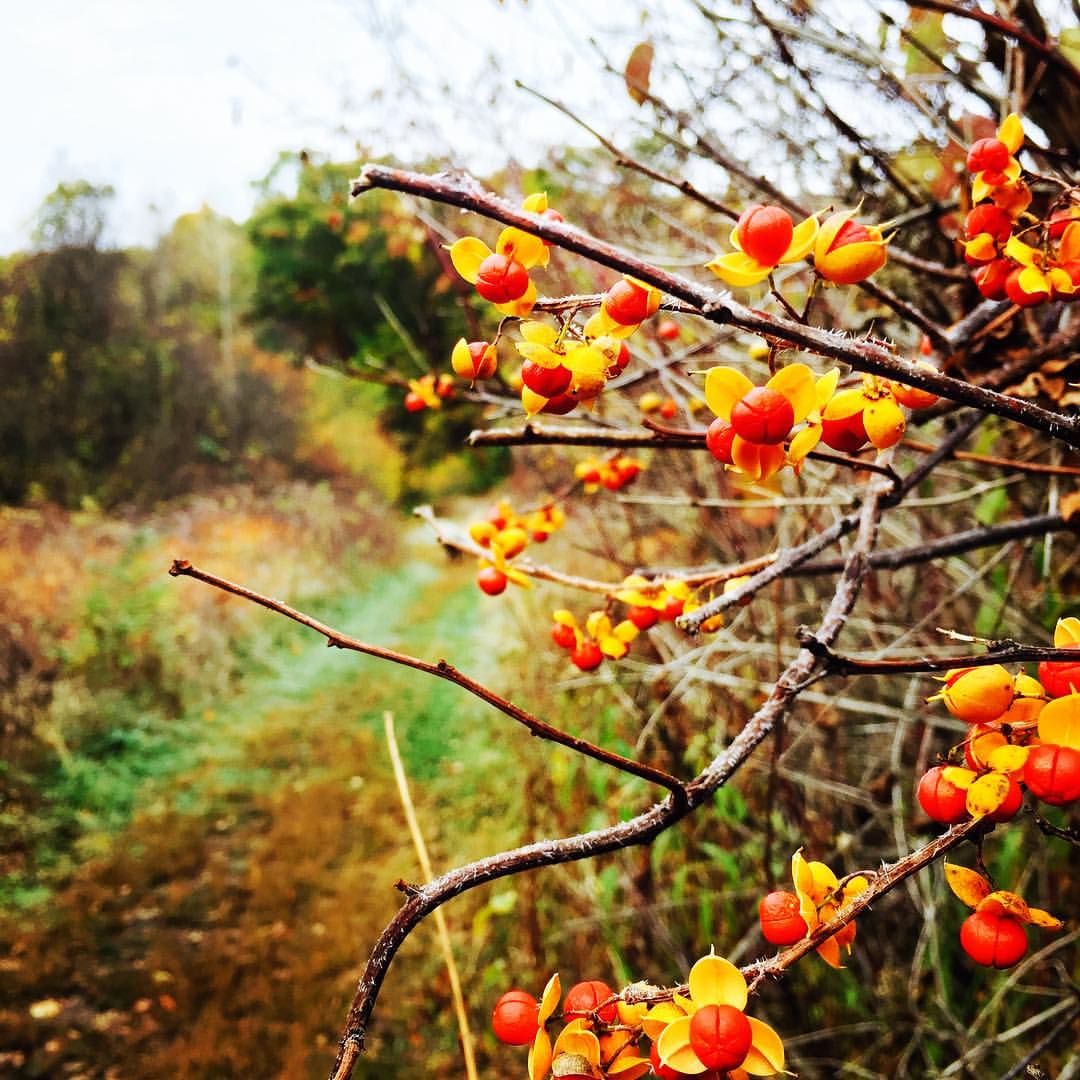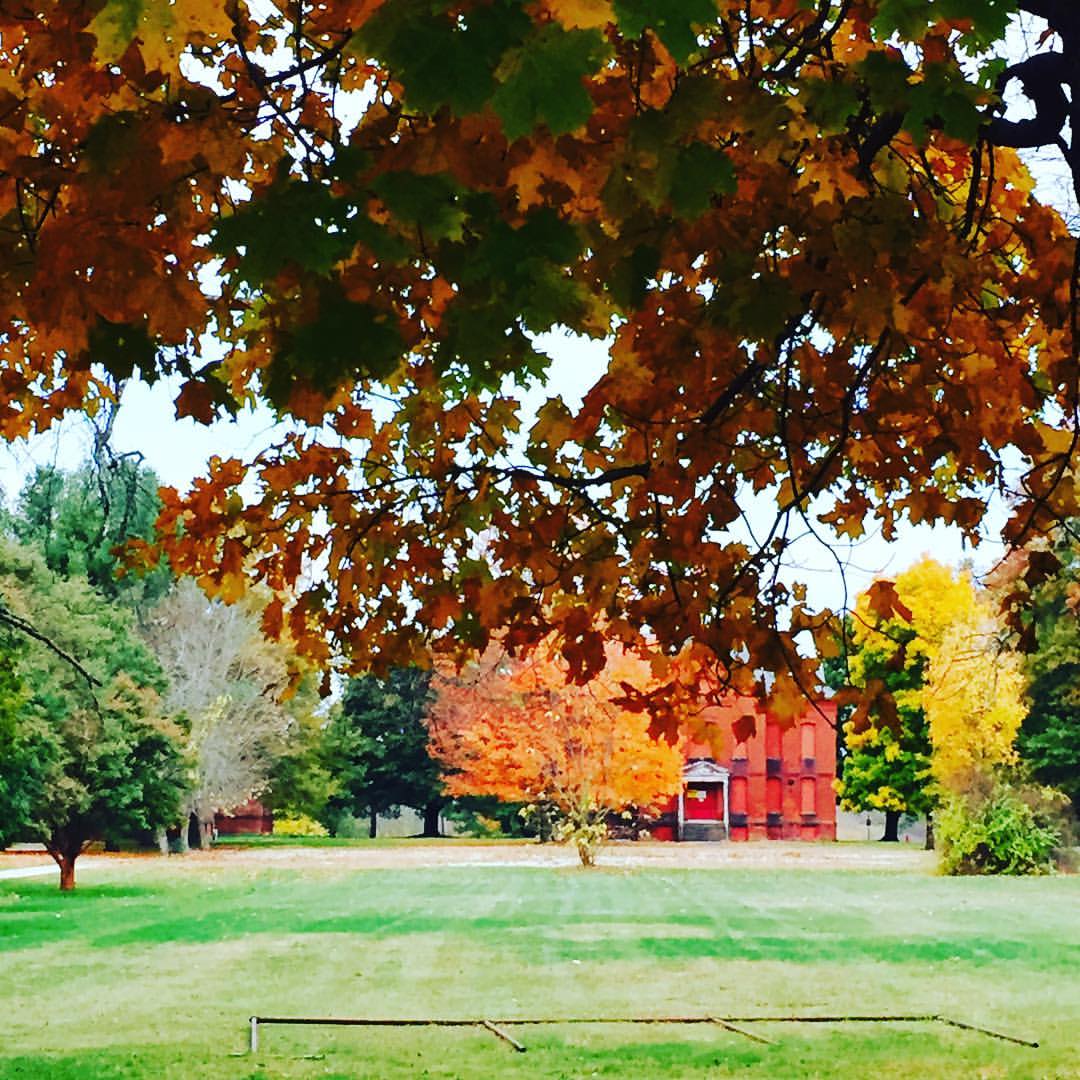#NewThisDay Writing From My Photo Stream
Crab apples clinging to the tree, October
My early morning begins outdoors, warmed by the glow of these red gold Crab apples clinging to the tree for the last days of October. A morning of cloudy skies above frosty fields, I am taking a long, luxurious ramble. I've worn hiking boots so my feet won't freeze me into stopping short. Suzi, Charlie and I cover lots of territory - the old hospital estate with its still bright leafed stately trees; turning into the huge field we walk down the gently sloping old dirt road, past bright ivies and brown Queen Anne's Lace, past the tiny apple bulbs shining exactly where I knew they hung beside the trail. It's a sweet fresh day to breathe deeply. Except while crossing a section of artificial turf, lacrosse fields for the school, un-naturally green, with a faintly chemical smell. I head onto the wooded path, lovely smell of organic decay, before returning to the field where all the milk weed gathers, drying to re-seed the meadow. I stop with the milkweed for some time because it wants so much to be seen and appreciated. Unlike the Queen Anne's Lace or so many other flowering wild plants that are most attractive in their freshest states, the milkweed is most eye-catching long after transforming its tiny blooms into its tight-packed plump green pod. Fall is the milkweed's glory time, still nectar for insects and this visual, tactile nourishment rousing the spirit - my spirit, this frosty gray morning with winter on its way.
“In this sketch of its life history we can see how, up through flowering, common milkweed is characterized by exuberant vitality: vigorous underground rhizome growth; yearly expansion of many long, large-leafed shoots; production of numerous flowers that secrete copious amounts of nectar. After flowering, milkweed pulls back and concentrates its vitality into formation of a relatively small number of pods, but each swells into a large pod that houses a multitude of apparently viable seeds that spread into the larger environs. . . ”
All photos and words copyright Kelly DuMar, 2016








